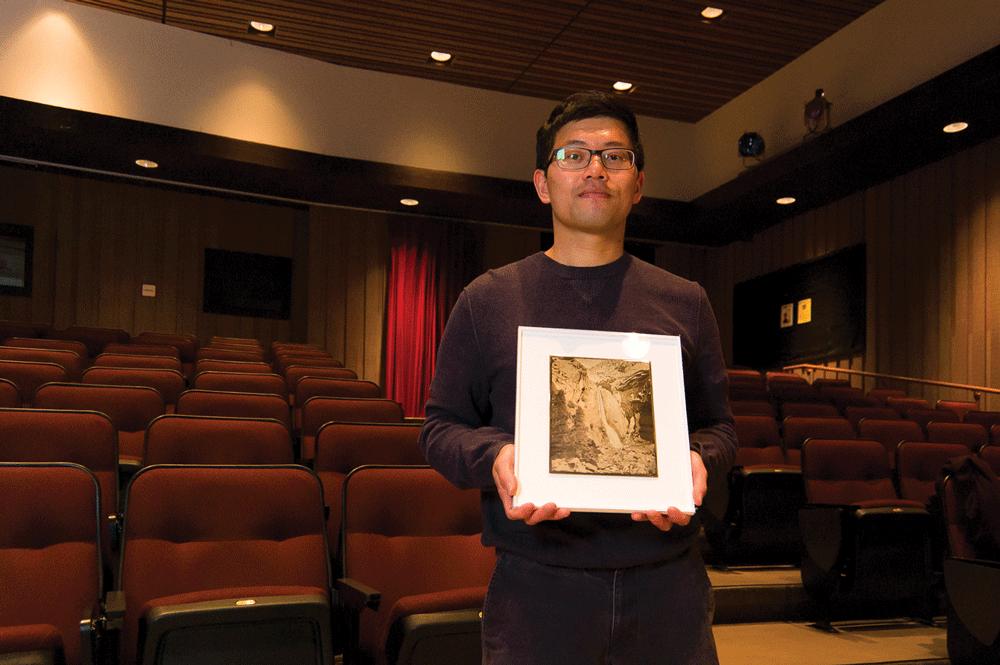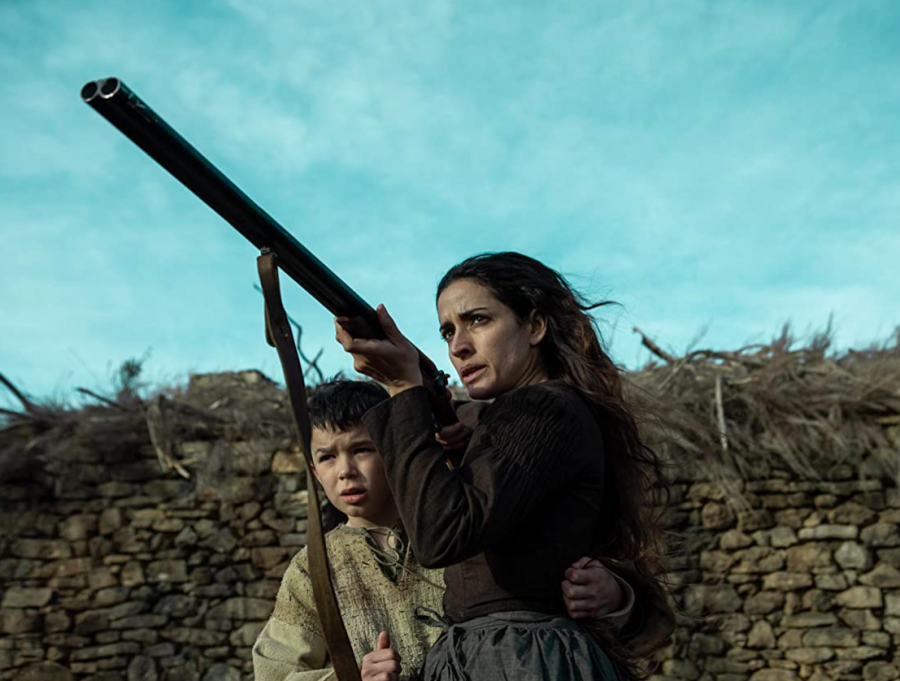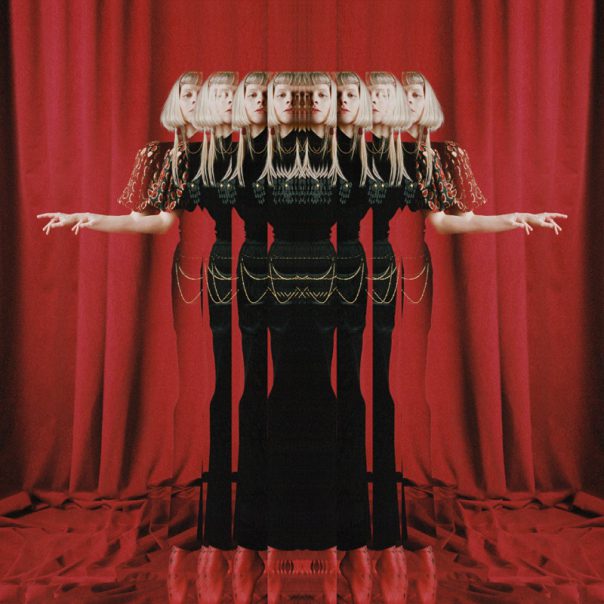Lit only by the screen of a laptop computer in the A-11 lecture hall, a soft-spoken, local photographer brought his conceptual imagery and passion to De Anza College on May 16 as part of De Anza’s ongoing Photo Lecture Series.
Binh Danh visited the campus to speak about his fine art images as well as leave an impression of his photography experience. He studied photography at San Jose State University and earned his masters degree at Stanford University.
Danh began by sharing his roots, discussing his family’s escape from Vietnam during the war and how photography had influenced his life.
Part of the magic of photography for Danh is the uncanny ability for imagery to repeat itself.
Danh showed a studio portrait taken of his family shortly before they left Vietnam. Even though the image was posed in front of a backdrop, it represented their dreams. Later, a nearly identical photo was taken outdoors inthe U.S.
Making a photographic journey to Pulau Bidong, the overcrowded refugee camp where his family had lived, allowed Danh’s mother to share stories and reconnect with past memories on the now-uninhabited island.
During the trip, Danh collected
many “found” items in the form of letters and documents that he would use for inspiration in creating his famous chlorophyll prints.
Danh’s idea of chlorophyll prints came from a garden hose coiled up on a lawn, leaving the parts covered by the hose dead, and leaving a lighter area behind. He creates photographic transparencies of the pictures he wants to print and leaves them over plant matter for days, allowing the vegetation to decay into a living image.
One of the themes in Danh’s work in Vietnam was the concept of consuming the war. Traditionally, family graves are located in the rice paddies, said Danh. The Vietnam War left spent munitions and bomb craters littering the rice paddies and coffee fields. The food became marked with the stain of war.
Danh showed a spoon he was given from a restaurant in Laos. On the surface, it is a crude spoon, cast from poor quality metal with air bubbles, mold lines and sprue. Danh revealed that the utilitarian utensil “is made from the remnants of bombs.”
Danh showed that in every sense, the Vietnam War is an inseparable part of the landscape.
The prisoners had mug shots taken when they arrived at S-21. Many of these photos are part of the exhibits at Tuol Sleng.
“When experiencing the images we become them, they become us. We die a little, they live a little,” said Danh.
During this project, Danh experimented with daguerreotypes. Daguerreotype is an early method of making images with sliver-clad plates that have been sensitized to light.
When asked how he chooses different mediums for his projects, Danh said, “I always want to try new things… There’s so much you can do with photography. I tend to try to pick a process that goes well with the concept of the work.”
Using the highly reflective surface of daguerreotypes, Danh includes the viewer’s reflection as part of the work, making each experience a personal one.
Danh’s more recent work is focused on the American landscape and experience. He has photographed Yosemite in daguerreotype and made images that draw inspiration from Civil War battlefields and the poet Walt Whitman.
Diane Pierce, photography department program coordinator, described the talk as “understandable, accessible and prepared.” She said Danh’s work is relevant as a narrative retelling the history of the Vietnam War and its effect on the artist in the present time and place, and “to tie it into the landscape and the plantscape was insightful in a new way.”
The De Anza Photo Lecture Series, put on by the photography department is “trying to bring content that’s relevant to photography and also something that’s exciting,” said Chia Wen, photography department lab tech.
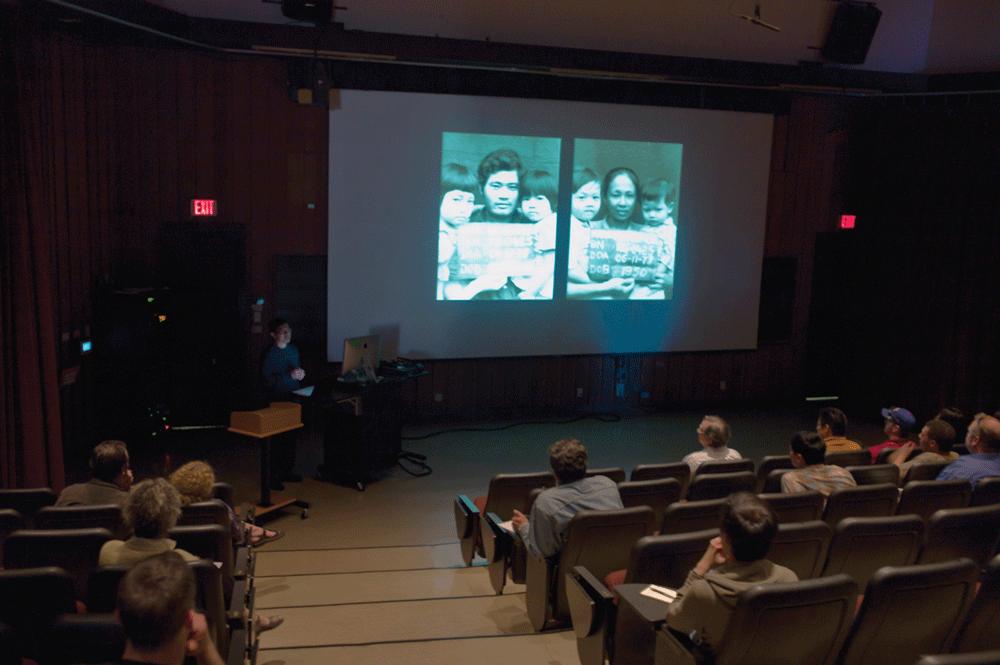
IMAGES WITH STORIES TO TELL – Binh Danh presents his photography at De Anza College. The projected images are photos of his family taken at the Pulau Bidong refugee camp. (CHIA WEN)
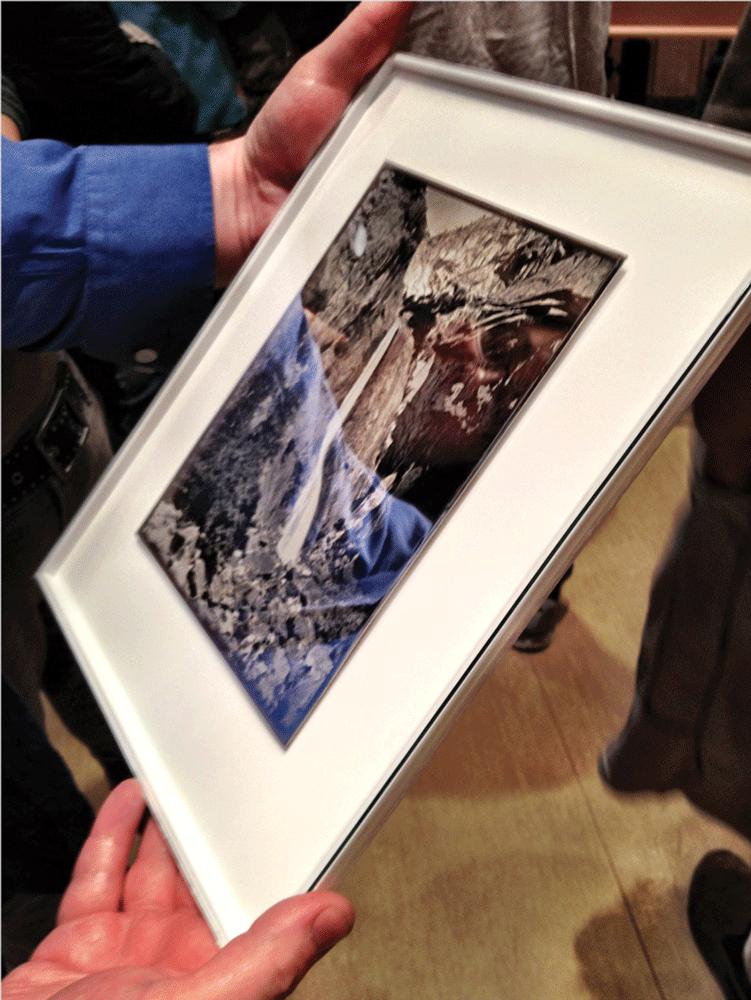
HANDS-ON – De Anza students carefully handle and examine Binh Danh’s one-of-a-kind daguerreotype prints. (Photo courtesy of PHILLIP LEE RICHARDSON)



